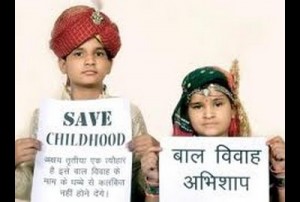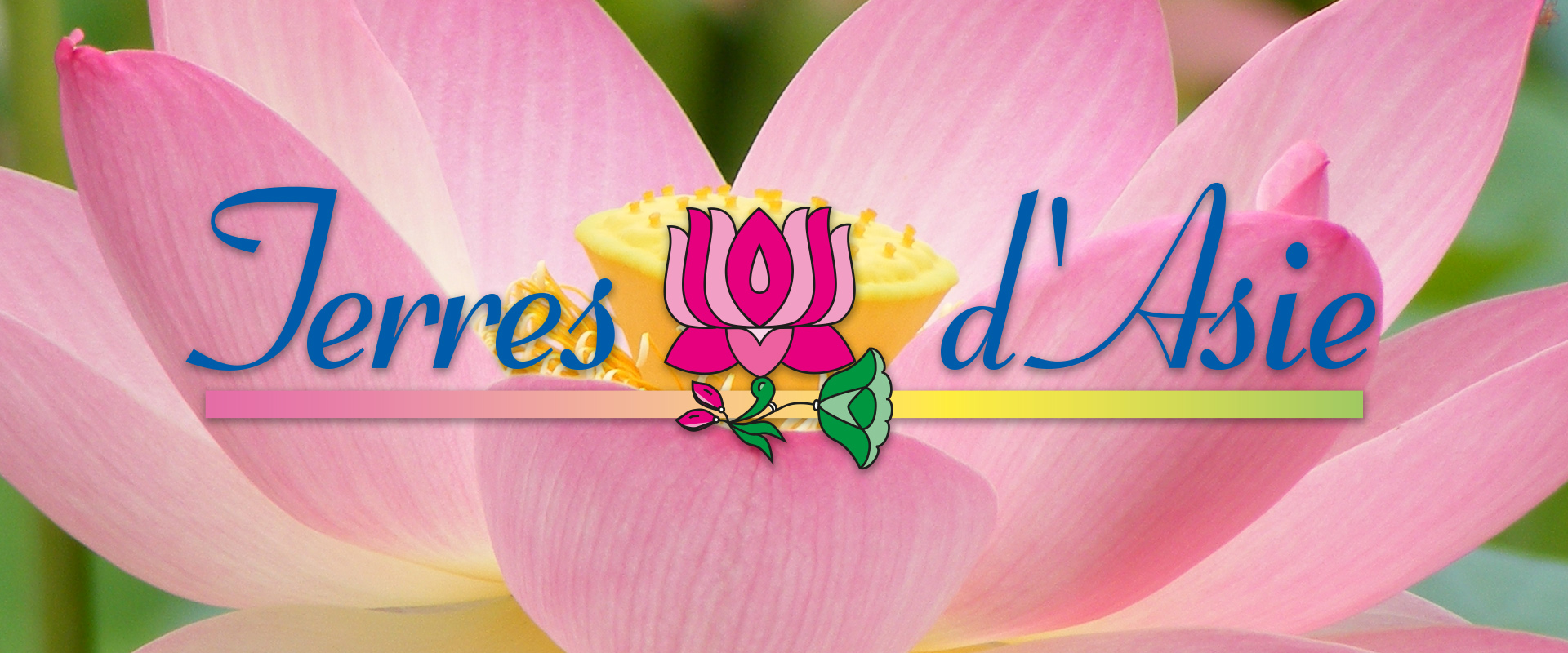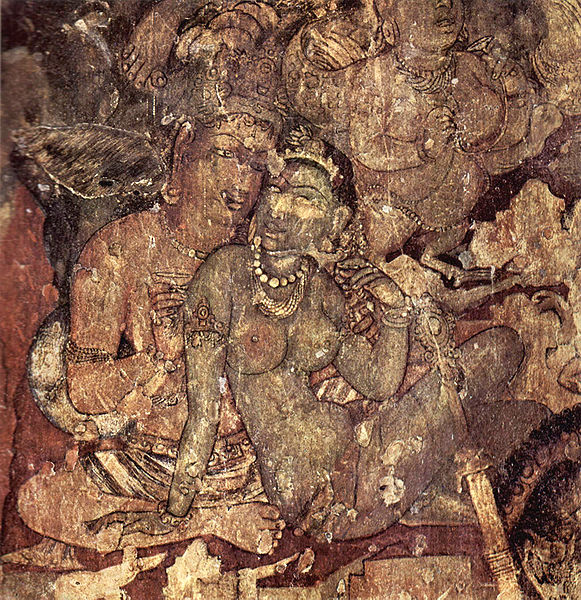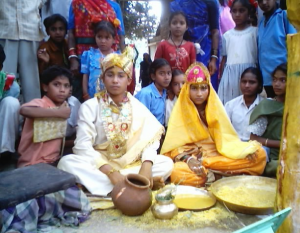In the earliest known history of India from 200 BC to 700 AD, young women and men rejoiced a liberal concept of love and they had the freedom to choose a partner and enter into romantic relationships with each other without any fear of scandal. However, from Middle Age, as states and government developed, the political system elaborated and modified the Indian society gradually. It transformed the lifestyle and opinion of its people from a simple to more complex form, restricting significantly the notion of liberty. Women lost their rights and had to obey rules and respect the code be behaviour. They were now subject to family discipline and the honour of their clan. Since young women were considered irresponsible and irrational in love, parents married them early before they got caught into any scandal. Though, age at which the girl was to be married differed and it was rare for girls younger than 12 to be married in antiquity. Nevertheless, girl brides became younger towards the Medieval period, and it became increasingly common for girls as young as six or eight to be married as Indian society. The prime concern of negotiating the marriage was to find out the compatibility between the two families. It was believed during those times that if two persons know each other right from childhood it enhanced understanding and affection. Hence, parents decided on the marriages of their children at a very early age although the daughter stayed with her parents until she attained the age of puberty.
The eight forms of Marriages in Ancient India
Though child marriage or Bal-Vivaha was not widespread or rather very rare in the Indian culture but, according to Manu Smiriti, the Vedic law of all social classes, there existed eight main forms of marriages in ancient India.
Brahma Marriage
The Brahma form of marriage holds a supreme position and this system of marriage does not involve any system of dowry. Brahma Marriage takes place only after the completion of learning period or “Brahmacharya” of a boy and in this system the bride’s father ensures that the prospective groom has acquired the knowledge of the Vedas and endowed in noble qualities. Daiva Marriage Daiva Marriage is regarded to be inferior to the Brahma marriage. After waiting for a reasonable period to get a suitable man for their daughter, when parents fail to find anyone, they go looking for a groom in a place where a sacrifice is being conducted. During this marriage ceremony, the girl is well groomed with ornaments and is surrendered to the priest who performs the sacrificial activities.
Arsha Marriage
The word Arsha means Sage in Sanskrit language and hence, Arsha Marriage suggests marriages with the sages or rishis. In this form of marriage the bride’s father received a gift of milk cows and a breeding bull from the bridegroom. This was not considered a dowry, but a token of respect. This type of marriage took place because the parents of the bride could not afford the expense of their daughter’s marriage at the right time according to the Brahma rite and therefore, the girl is married to an old sage. As per shastras, noble marriages were far away from any form of business or monetary transactions and thus this form of marriage was not regarded nobles.
Prajapatya Marriage
The bride’s father gives his daughter to the bridegroom with the traditional blessing and by addressing the couple with the mantras, “May both of you perform together your Dharma or sacred duties”. This kind of marriage may be similar to that of the Brahma marriage, which may be the origin of Prajapatya Vivah or marriage.
Gandharva Marriage
Those couples who are not permitted by their families to get united seek refuge in this form of Hindu marriage. Bridegroom and bride marry secretly without the knowledge of their parents. The Gandharva form of marriage is somewhat similar to the present day love marriage, but it was considered inferior because this form of marriage was done by passionate impulses. The Gandharva Marriage or the marriage of the celestials involves a simple exchange of garlands upon which the sanctity of the marriage is confirmed. Reference to this type of marriage is found in a number of epics and mythological texts.
Asura Marriage
Asura Marriage took place when an unsuitable bridegroom approached the family of the bride and offered a high price to afford to get married to the girl. It could thus be looked upon as a bribe for getting the girl the boy’s desires, even if he is in no way a match for the girl. This system of marriage was not a much desirable form because the women treated like goods.
Rakshasa Marriage
The Rakshasa Marriage is also not a desirable form of marriage because it involves the use of force to woo a girl. In this type of Hindu marriage the woman was forcibly taken away from her family and then persuaded to marry. This was considered inferior because caused by lustful impulses and improper use of force.
Paishacha Marriage
The last and the eighth type of Hindu Marriages is the Paishacha Marriage. This type of marriage is considered the most inferior form of Hindu marriage and has been prohibited in the later ages. It was considered that men were permitted to marry those women in this form of marriage, whom they had seduced when the woman was intoxicated, asleep or insane. Nevertheless, the most popular form of marriage was Swayamvara where grooms assembled at the bride’s house and the bride selected her spouse. Svayam-vara means “a self-selection of one’s husband”, Svayam = self, Vara = husband. This ceremony is mentioned in the famous Indian epics of Ramayana and Mahabharata.
Significance of Marriage in Hindu Philosophy
Not all types of marriages of ancient India had religious sanctions. All these eight different forms of marriages varied as the rituals and rites of the ceremonies were different from each other and some of these marriages are still in practised in Hinduism.
As per the Hindu philosophy, marriage is not just a process of coming together of the individuals, but it is also a holy bond and a commitment which lasts a lifetime. Even the holy scriptures of the Vedas the sacred Hindu texts suggest that an individual should enter the phase of Grihasta “household” after his or her student life. Thus, it can be said that marriage is almost a mandatory custom in the life of all the Hindus. According to the philosophy of the Vedas, there is a restriction on child marriage. The age of marriage for a boy is 25 years or more and that of a girl is 18 years or more.
However, from the Middle Ages to the present day the custom of child marriage against Vedas persists in India. There are many reasons to believe that this custom actually originated in the medieval time when the political climate was unstable and law and order was not yet fixed on the national level. Arbitrary powers were concentrated in the hands of a hierarchy led by a despotic monarch. The predatory Sarasenic feudal lords and princelings of Sarasenic origins who ruled all over India in the Middle Ages were a source of a constant threat. Hence, parents would seek to get over with the responsibilities of their daughters by getting them married very young.
The Present Situation
More than 40 per cent of the world’s child marriages take place in India, even though the legal age for wedding is 18, reported UNICEF. Child marriage is of course banned in India and the Indian government has taken a strong step to tighten laws against child marriage, but unfortunately this custom continues to exist in spite of legal interdictions. According to the new bill, Prohibition of Child Marriage Bill 2006, the priests, police or local leaders will be jailed and fined if they will be found indulged in this illegal practice, declared Renuka Chowdhury, minister for women and children. This bill grants protection to many children forced into marriage every year in the rural parts of the country. They are forced to consent with their parent’s decision or choice. Very often, they are even too young to understand the significance of marriage and do not understand the gravity of the event. Young girls are threatened, bullied, blackmailed and emotionally exploited.
Is India really as modern as it claims to be at present? Has it really evolved into an outstanding nation where women folk have equal rights and command a respectable place in the society?
The reply is, of course, NO. India is proud to reach the moon today and it boasts about its technological and economic progress, but can the nation be modern and prosperous when children are being sold off for a petty sum of money or forced to marry at a very early age and often wedded to old men literally old enough to be their father and die with childbirth and miscarriages! How can the Indian government celebrate the Commonwealth games and spend 6 billion dollars for it, when such an important part of its population are living in misery, and facing deplorable living conditions. How can India be proud of the opening ceremony show with a Rs 80-crore aerostat, the giant helium balloon that glittered in the limelight over the Jawaharlal Nehru Stadium on Sunday the 3rd of October 2010 when thousands of Indian children labour day and night and have no roof or access to education or health care? How many helpless parents are obliged to marry off their minor daughters, some as young as seven years old! No concrete step is taken to fight against child abduction or sexual abuse. The poor and the category belonging to the lower castes are victims of discrimination and deprived of everything, even of their self-dignity! Despite the ban, child marriage is still widespread in Jharkhand, Chhattisgarh, Orissa, Rajasthan, Madya Pradesh and many other states of India.
The Serious Consequences of Child Marriage
Indian society is actually very complex, infested with same age-old beliefs, cultural and social interdictions, outdated rites and customs. In a country where ignorance and poverty are dominating factors, early marriage is often perceived as the only option for girls and is often seen by parents of young girls as a means of securing both their own and their daughter’s future. The causes and consequences of child marriage are intrinsically linked, including girl’s lack of autonomy and low levels of education, poor health status, poverty and overall low socioeconomic status.
The recent government study shows that more than 65 per cent of girls are getting married before 18 in India. Naturally, child marriage causes high rates of maternal mortality and one woman dies every seven minutes in India because of a pregnancy-related cause.
Minor girls are abruptly exposed to sex and they’re abused and exploited sexually because when a child bride is married she is likely to be forced into sexual activity with her husband, and at an age where the bride is not physically and sexually mature it causes severe health consequences. Girls aged l0-14 are five times more likely to die in pregnancy or childbirth than women aged 20–24. It is a huge responsibility for a young girl to become a wife and mother and because girls are not adequately prepared to face these roles which demand a lot of maturity and a big sense of responsibility. Naturally, this heavy burden has a serious impact on their psychological welfare, their perceptions of themselves and also their marital relationship. Women who marry early are more likely to suffer inevitable psychological as well as physical consequences. Studies indicate that women who marry at young ages are more likely to believe that it is sometimes acceptable for a husband to beat his wife, and are, therefore, more likely to experience domestic violence themselves. Abuse is sometimes perpetrated by the husband’s family as well as the husband himself, and girls who enter families as a bride often become domestic slaves for the in-laws and live under a constant threat and pressure.
Early marriage has also been linked to wife abandonment and increased levels of divorce or separation. Child brides also face the risk of being widowed by their husbands who are often much older to them or they have an unexpected death. In these instances the young bride is likely to suffer additional discrimination as in Indian culture the young widows are held responsible for the death of their husband and suffer a loss of status and may be ostracised by society and denied property rights.
But in the 21st century, has the Situation of the Indian Women Envolved?
The condition of womenfolk has not ceased to regress in India. In the Vedic period, they enjoyed maximum individual liberty, had a respectable place in the society and played an important role in religious activities. They participated in the sacred ceremonies and performed the Vedic yagya or fire sacrifice along with their husband. They not only rejoiced liberal love, but they could as well choose a partner according to their wish. But gradually, the condition of the Indian women degraded in the medieval time and they were considerably deprived of their privileges and freedom of expression and movement. They lost their right to choose the man they desired to marry and parents began to wed their daughters at a very early age which gradually transformed into child marriage. In no time did this insane practice become a common tradition and minor children became a victim of it.
At this modern epoch of the 21st century, the truth is bitter. The women remain the first victim of the Indian society, which is even today based on rigid traditions, caste system and religious beliefs. Modernity and technological boom is but a superficial progress because the prevailing Indian conditions have not evolved ever since. There’s no distinct progress in rural areas where the majority of the total Indian population live. The rural population in India comprises the core of Indian society and also represents the real India. According to the 2001 Indian census, there are 638,365 villages in India and about 74% of Indian population lives in these villages. In such remote areas age-old customs and traditional are firmly anchored and in spite of the ban, child marriages are taking place without any restriction or fear. The present condition of the Indian women is rather alarming because it is not normal to face and lead an oppressive life in the 21st century! Besides being caught in child marriages, minor girls and young women are today kidnapped, sexually abused, sold, ill-treated, tortured and even killed.
What can be done?
Repeated studies have shown that education plays an important role to eliminate child marriage. Research by UNICEF shows that the more education a girl receives, the less likely she is to be married as a child. Improving access to education and eliminating gender gaps in education are, therefore, important strategies for ending the practice of child marriage.
Hence, it is urgent to bring some positive and concrete changes, to multiply the efforts to improve the social conditions, to impart education and to put an end to this age-old tradition that cripples the nation. Radical actions should be taken to reform the old-fashioned mentality of the people who cling to such irrational customs. The Indians who practise child marriage in remote villages or towns must be helped, guided, educated and informed about all the health and psychological problems which follow any child marriage.
The Indian government has voted a new bill, people marrying children and people involved in these practices, people abetting or attending a child marriage would face up to two years in prison and a fine of 100,000 rupees. The new bill has the provision to appoint “child marriage prohibition officers” in each of India’s states. They will keep an eye on the practice and will collect evidence to prosecute such cases. Further, courts have been empowered to rule a child marriage null and void even after many years of practice. In addition, the husband will be forced to give compensation and residence to his former wife. Unfortunately, in spite of the legal announcements made by the Supreme Court, there are many cases which hardly enter the register logs.
http://www.dailymotion.com/video/x2m8tni
As poverty is one of the main causes of child marriage and more than half of the Indian population live under the poverty line and have no money to afford a decent shelter or a proper meal, it is the duty of the Government to promote long-term policies to develop the rural areas and impart education in remote areas, to uplift the poor living conditions and enhance instructive projects of education and health care facilities. Because of poverty and lack of education precisely many desperate parents from the poor class get their minor daughters married in return of money as old men pay a considerable sum to achieve young girls. Only when a joint effort is made, will the country rise and prosper, and the worthless customs such as child marriage will cease to exist and happy educated children will make a better future and a healthy nation.
© Aparna Marion – Oct. 2010
Bibliography
- Auboyer, Jeannine, Daily Life in Ancient India: from 200 BC to 700 AD. London: Phoenix Press, 2002.
- Sagade Jaya, Child Marriage In India: Socio-legal And Human Rights Dimensions. OUP India, 2005.
- Shulman Julian, Child Marriage in India.
- UNICEF, Early Marriage. Child Spouses, 2001.
Links
- “Childline India Foundation”
- “Child marriage in the World”
- “Documenting Child Marriage for Over a Decade – and Still Going” (Sept. 2015)
- “Four cases of child marriage reported every week in Bangalore”
- “United Nations members resolve to end child marriage” (8th Feb. 2017)




Social evil can be removed by awareness only.